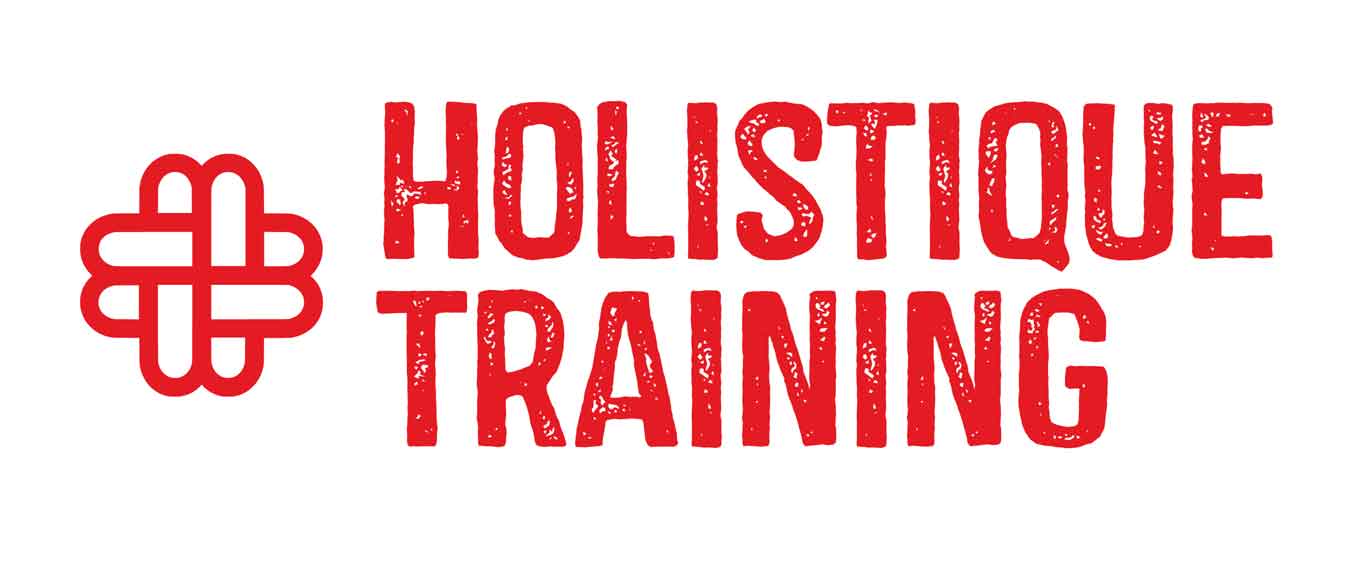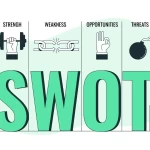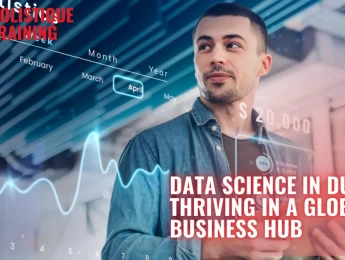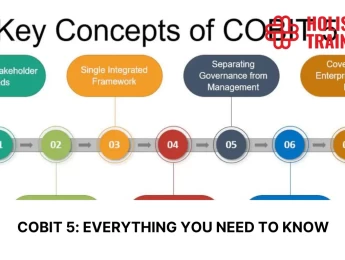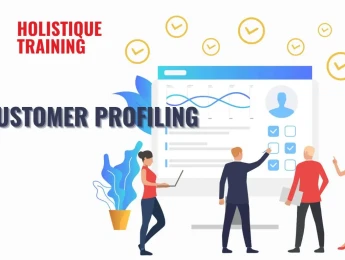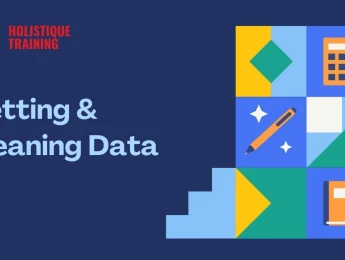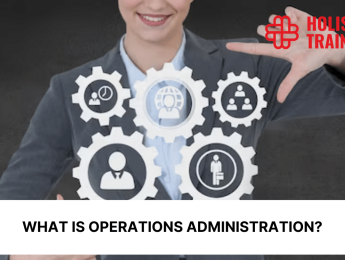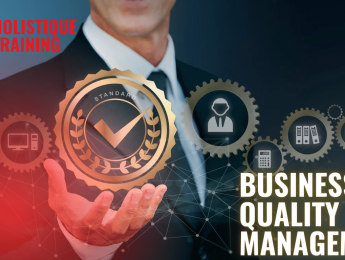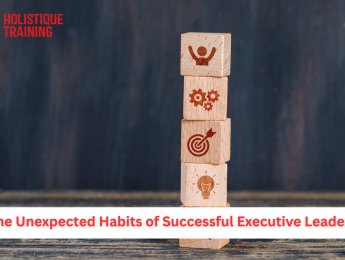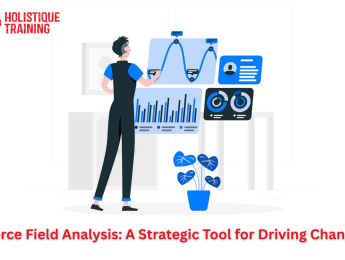- Table of Contents
- Introduction
- What is Consulting?
- What Does a Consulting Framework Mean?
- The Importance of Consulting Frameworks
- 1. Bringing Clarity and Focus to Complex Problems
- 2. Ensuring a Comprehensive Analysis
- 3. Enhancing Efficiency
- 4. Promoting Logical and Data-Driven Decision-Making
- 5. Facilitating Effective Communication
- 6. Building Credibility and Trust
- 7. Encouraging Collaboration and Alignment
- 8. Adapting to Unique Situations
- 9. Supporting Long-Term Strategic Thinking
- 10. Empowering Clients Post-Engagement
- Bringing It All Together
- Top 12 Consulting Frameworks
- 1. SWOT Analysis
- 2. Porter’s Five Forces
- 3. BCG Matrix
- 4. PESTLE Analysis
- 5. The 3C’s Framework
- 6. MECE Principle
- 7. Value Chain Analysis
- 8. McKinsey 7S Framework
- 9. Growth-Share Matrix
- 10. The Pyramid Principle
- 11. Ansoff Matrix
- 12. Balanced Scorecard
- Challenges of Consulting Frameworks
- Over-Reliance
- Complexity
- Dynamic Environments
- Subjectivity
- Client Resistance
- Conclusion
Introduction
Consulting is an art as much as it is a science. At its core, consulting is about solving complex problems, uncovering opportunities, and helping organizations achieve their goals. Whether it's a multinational corporation seeking to expand into new markets or a startup trying to find its footing, consultants are called upon to provide clarity, structure, and actionable recommendations. But how do consultants approach such diverse challenges? The answer lies in consulting frameworks.
This blog post dives deep into the concept of consulting frameworks—what they are, why they matter, and how they are used. We’ll explore some of the most popular frameworks in the consulting world, highlight their applications, and discuss the challenges of relying on structured problem-solving. By the end of this post, you’ll have a clear understanding of how these frameworks serve as the backbone of consulting and how they can be applied across industries.
What is Consulting?
Consulting is a professional service in which experts, known as consultants, provide advice and solutions to organizations facing specific challenges or aiming to achieve particular goals. Consultants operate across a wide range of industries, including management, technology, finance, healthcare, and marketing, among others. They are often brought in to address issues that require specialized knowledge or an objective perspective.
At its essence, consulting is about problem-solving. A consultant’s job is to assess the current situation, identify key challenges or opportunities, and recommend actionable strategies. For example, a retail company struggling with declining sales might hire a consultant to analyze its operations, customer behavior, and market trends to identify the root causes and propose solutions.
Consulting is also about creating value. Beyond solving problems, consultants help organizations optimize processes, reduce costs, improve efficiency, and innovate. The ultimate goal is to empower businesses to achieve sustainable growth and success.
What Does a Consulting Framework Mean?
A consulting framework is a structured approach to analyzing and solving a specific type of business problem. Think of it as a mental model or toolkit that consultants use to break down complex issues into manageable components. Frameworks provide a roadmap for identifying key factors, organizing information, and developing actionable insights.
Consulting frameworks are not one-size-fits-all solutions. Instead, they are flexible tools that can be adapted to suit the unique needs of a project. For example, a consultant working on a market entry strategy might use a framework to evaluate the attractiveness of a new market, assess competitive dynamics, and identify potential risks. Similarly, a consultant addressing operational inefficiencies might use a different framework to analyze workflows, identify bottlenecks, and recommend process improvements.
The power of consulting frameworks lies in their ability to bring structure and clarity to ambiguous problems. By providing a systematic approach, frameworks help consultants avoid overlooking critical factors and ensure that their recommendations are grounded in data and logic.
The Importance of Consulting Frameworks
In the world of consulting, where ambiguity and complexity reign supreme, having a structured approach to problem-solving is not just helpful—it’s essential. Consulting frameworks serve as the foundation upon which successful projects are built. They provide a systematic way to break down challenges, analyze data, and generate actionable recommendations. Without a framework, even the most experienced consultants can find themselves lost in a sea of information, struggling to identify the root cause of a problem or formulate a coherent strategy.
But what makes consulting frameworks so important? Let’s explore their significance in greater detail.
1. Bringing Clarity and Focus to Complex Problems
Business problems are rarely straightforward. They often involve multiple stakeholders, conflicting priorities, and a mix of internal and external factors. For example, a company experiencing declining profits might face issues ranging from operational inefficiencies to shifts in customer behavior or increased competition. Without a structured approach, it’s easy to get overwhelmed by the sheer number of variables at play.
Consulting frameworks help bring clarity to such situations. By breaking down a problem into smaller, well-defined components, frameworks allow consultants to focus on the most critical aspects. For instance, using a framework like SWOT Analysis can help identify internal strengths and weaknesses while also highlighting external opportunities and threats. This clarity ensures that consultants prioritize their efforts and avoid wasting time on irrelevant factors.
2. Ensuring a Comprehensive Analysis
One of the biggest risks in consulting is overlooking important details. A missed factor, such as a new competitor entering the market or a regulatory change on the horizon, can derail an entire project. Consulting frameworks mitigate this risk by providing a structured checklist of elements to consider.
For example, a PESTLE Analysis ensures that consultants examine all relevant external factors—Political, Economic, Social, Technological, Legal, and Environmental—that might impact a business. Similarly, the MECE (Mutually Exclusive, Collectively Exhaustive) principle ensures that every aspect of a problem is covered without redundancy. This comprehensive approach minimizes blind spots and increases the likelihood of delivering robust recommendations.
3. Enhancing Efficiency
Time is a precious resource in consulting. Clients often expect solutions within tight deadlines, and consultants must balance multiple projects simultaneously. Starting from scratch with each new problem is not only inefficient but also impractical. Consulting frameworks provide a proven methodology that consultants can rely on to quickly structure their analysis and identify key insights.
For instance, when tasked with evaluating a company’s market position, a consultant can immediately turn to Porter’s Five Forces to assess competitive dynamics. This saves valuable time compared to brainstorming a new approach for every project. By streamlining the problem-solving process, frameworks allow consultants to focus their energy on generating insights rather than reinventing the wheel.
4. Promoting Logical and Data-Driven Decision-Making
Consulting frameworks are grounded in logic and data. They provide a systematic way to approach problems, ensuring that recommendations are based on evidence rather than intuition or guesswork. This is particularly important when working with clients who demand clear justification for every decision.
For example, the BCG Matrix helps consultants classify a company’s products or business units based on measurable factors like market growth and market share. Thisdata-driven approach makes it easier to justify recommendations, such as investing in “Stars” or divesting from “Dogs.” By following a framework, consultants can build a strong case for their proposals, increasing client confidence in their expertise.
5. Facilitating Effective Communication
Consulting is not just about solving problems—it’s also about communicating solutions effectively. Even the best analysis is useless if it cannot be clearly explained to the client. Consulting frameworks provide a common language and structure that make it easier to present findings and recommendations.
For example, the Pyramid Principle is a framework specifically designed for communication. It encourages consultants to start with the main conclusion and then support it with key arguments and evidence. This top-down approach ensures that clients grasp the big picture before diving into the details. Similarly, frameworks like the McKinsey 7S help consultants organize their recommendations in a way that is logical and easy to understand.
By using frameworks, consultants can present their ideas in a clear, concise, and persuasive manner, making it easier for clients to act on their recommendations.
6. Building Credibility and Trust
Clients hire consultants for their expertise, and following a recognized framework signals professionalism and competence. Frameworks show that the consultant is not just relying on intuition or anecdotal evidence but is instead using a structured, proven approach to solve problems.
For instance, a consultant who uses the Ansoff Matrix to recommend a growth strategy demonstrates a deep understanding of strategic planning. This builds credibility with the client, who is more likely to trust the consultant’s recommendations. Additionally, frameworks provide a level of transparency, as clients can see how the analysis was conducted and how conclusions were reached.
7. Encouraging Collaboration and Alignment
Many consulting projects involve multiple stakeholders, including the client’s leadership team, employees, and external partners. Aligning these diverse groups around a common goal can be challenging. Consulting frameworks act as a unifying tool, providing a shared structure and language for discussing problems and solutions.
For example, when conducting a Value Chain Analysis, consultants can involve key stakeholders from different departments to map out the organization’s activities. This collaborative process not only ensures that all perspectives are considered but also fosters buy-in from stakeholders who feel included in the problem-solving process.
8. Adapting to Unique Situations
While consulting frameworks provide structure, they are not rigid templates. Their flexibility allows consultants to adapt them to the unique needs of each project. For example, a consultant working with a tech startup might modify Porter’s Five Forces to focus more on technological innovation and less on supplier power, which may be less relevant in that context.
This adaptability ensures that frameworks remain relevant across industries and projects. Consultants can customize their approach while still benefiting from the underlying structure and logic of the framework.
9. Supporting Long-Term Strategic Thinking
Consulting frameworks are not just tools for solving immediate problems—they also help organizations think strategically about the future. For example, the Balanced Scorecard encourages businesses to evaluate their performance across multiple dimensions, including financial, customer, internal processes, and learning and growth. This holistic approach ensures that short-term decisions align with long-term goals.
By following a framework, consultants can help clients develop strategies that are not only effective in the present but also sustainable in the long run.
10. Empowering Clients Post-Engagement
One often-overlooked benefit of consulting frameworks is their ability to empower clients after the consultant’s work is done. When consultants use frameworks to structure their analysis and recommendations, they leave behind a tool that clients can continue to use on their own.
For example, a client who learns how to conduct a SWOT Analysis or use the BCG Matrix can apply these frameworks to future challenges without needing to hire a consultant again. This adds long-term value to the consulting engagement and strengthens the client-consultant relationship.
Bringing It All Together
The importance of following a consulting framework cannot be overstated. Frameworks provide clarity, structure, and efficiency in tackling complex problems. They ensure a comprehensive and data-driven analysis, facilitate effective communication, and build trust with clients. Moreover, their adaptability and long-term utility make them indispensable tools for consultants across industries.
Ultimately, consulting frameworks are not just about solving problems—they are about solving them in a way that is logical, efficient, and impactful. By leveraging these frameworks, consultants can deliver value that goes beyond the immediate project, empowering organizations to thrive in an ever-changing business landscape.
Table: Metrics to measure the effectiveness of applying a consulting framework
Metric | Description |
Clarity of Insights | How well the framework simplifies and organizes complex problems. |
Actionability of Recommendations | The extent to which the framework leads to clear, practical solutions. |
Adaptability to Context | How easily the framework can be customized for different industries or scenarios. |
Stakeholder Buy-In | The level of acceptance and support from clients or team members. |
Impact on Results | Measurable improvements in performance, efficiency, or outcomes after application. |
Top 12 Consulting Frameworks
Consulting frameworks are essential tools that help consultants approach problems systematically, organize their analysis, and deliver actionable insights. Over the years, several frameworks have become staples in the consulting world due to their versatility and effectiveness. While each framework has its specific use case, they all share the common goal of simplifying complex problems and providing a structured path to solutions.
Below, we’ll explore 12 of the most widely used consulting frameworks. For each, we’ll provide a definition, explain its purpose, and outline how it can be applied in real-world scenarios.
1. SWOT Analysis
Definition:
SWOT stands for Strengths, Weaknesses, Opportunities, and Threats. It is a framework used to evaluate internal and external factors that impact an organization’s performance.
Purpose:
SWOT Analysis helps organizations identify their internal capabilities (strengths and weaknesses) and external factors (opportunities and threats) to craft strategies that leverage strengths, address weaknesses, seize opportunities, and mitigate threats.
How to Use:
- Strengths: Identify what the organization does well, such as unique resources, competitive advantages, or strong brand recognition.
- Weaknesses: Highlight internal areas that need improvement, such as skill gaps, outdated technology, or inefficient processes.
- Opportunities: Look for external trends or changes in the market that the organization can capitalize on, such as emerging technologies, new customer segments, or regulatory changes.
- Threats: Identify external risks, such as new competitors, economic downturns, or changing consumer preferences.
Use the insights from this analysis to develop strategies that align internal strengths with external opportunities while addressing weaknesses and mitigating threats.
2. Porter’s Five Forces
Definition:
Developed by Michael Porter, this framework analyzes the competitive forces within an industry: the threat of new entrants, bargaining power of buyers, bargaining power of suppliers, threat of substitutes, and industry rivalry.
Purpose:
Porter’s Five Forces helps organizations understand the competitive dynamics of their industry and identify strategies to improve their market position.
How to Use:
- Assess each of the five forces to determine its impact on the industry.
- For example, analyze the threat of new entrants by evaluating barriers to entry, such as capital requirements or regulatory restrictions.
- Use the findings to identify ways to strengthen the organization’s position, such as building customer loyalty to reduce buyer power or diversifying suppliers to reduce supplier power.
3. BCG Matrix
Definition:
The Boston Consulting Group (BCG) Matrix categorizes a company’s products or business units into four quadrants: Stars, Cash Cows, Question Marks, and Dogs, based on market growth and market share.
Purpose:
This framework helps organizations prioritize their portfolio of investments by identifying which products or units to grow, maintain, or divest.
How to Use:
- Stars: High market growth, high market share. Invest heavily to maintain growth.
- Cash Cows: Low market growth, high market share. Use these as steady revenue generators.
- Question Marks: High market growth, low market share. Decide whether to invest or divest based on potential.
- Dogs: Low market growth, low market share. Consider divesting or repositioning.
Use the matrix to allocate resources effectively and ensure a balanced portfolio.
4. PESTLE Analysis
Definition:
PESTLE stands for Political, Economic, Social, Technological, Legal, and Environmental factors. It is a framework used to analyze the macro-environmental factors affecting an organization.
Purpose:
PESTLE Analysis helps organizations understand external factors that may impact their operations or strategy.
How to Use:
- Evaluate each factor:
- Political: Government policies, trade regulations, or political stability.
- Economic: Inflation, exchange rates, or economic growth.
- Social: Demographics, cultural trends, or consumer behavior.
- Technological: Emerging technologies or innovation trends.
- Legal: Industry regulations, labor laws, or intellectual property rules.
- Environmental: Climate change, sustainability, or resource availability.
2. Use the findings to adapt strategies to external changes, such as entering new markets or adopting new technologies.
5. The 3C’s Framework
Definition:
The 3C’s Framework focuses on three critical elements of business success: Company, Customers, and Competitors.
Purpose:
This framework helps organizations develop strategies that align their internal capabilities with customer needs and competitive dynamics.
How to Use:
- Company: Assess internal strengths, weaknesses, and resources.
- Customers: Understand customer needs, preferences, and behavior.
- Competitors: Analyze competitors’ strengths, weaknesses, and market positioning.
Use the insights to craft strategies that differentiate the company and meet customer demands effectively.
6. MECE Principle
Definition:
MECE stands for Mutually Exclusive, Collectively Exhaustive. It is a principle used to structure information in a way that avoids overlap and ensures completeness.
Purpose:
The MECE principle helps consultants organize their analysis logically and ensure that no important aspect is overlooked.
How to Use:
- Break down the problem into distinct categories that do not overlap (mutually exclusive).
- Ensure that all possible scenarios are covered (collectively exhaustive).
For example, when analyzing costs, categorize them into fixed costs and variable costs to ensure a complete and non-overlapping analysis.
7. Value Chain Analysis
Definition:
This framework examines the activities within an organization to identify areas where value is created and opportunities for improvement.
Purpose:
Value Chain Analysis helps organizations optimize their operations and identify ways to create additional value for customers.
How to Use:
- Map out the organization’s primary activities (e.g.,inbound logistics, operations, marketing) and support activities (e.g., HR, technology).
- Analyze each activity to identify inefficiencies or areas for improvement.
- Implement changes to enhance efficiency or deliver greater value to customers.
8. McKinsey 7S Framework
Definition:
This framework focuses on seven interrelated elements of an organization: Strategy, Structure, Systems, Shared Values, Skills, Style, and Staff.
Purpose:
The McKinsey 7S Framework helps organizations ensure alignment between these elements to achieve their goals.
How to Use:
- Evaluate each element to identify misalignments or gaps.
- For example, if the strategy emphasizes innovation but the structure is rigid, adjustments may be needed.
- Align the elements to support the organization’s objectives.
9. Growth-Share Matrix
Definition:
Similar to the BCG Matrix, this framework helps organizations allocate resources based on market growth and market share.
Purpose:
It aids in identifying which areas of the business to invest in or scale back.
How to Use:
- Categorize business units or products into growth-share quadrants.
- Invest in high-growth, high-share areas while divesting from low-growth, low-share areas.
10. The Pyramid Principle
Definition:
A communication framework that structures information in a top-down manner, starting with the main conclusion and supporting it with evidence.
Purpose:
The Pyramid Principle helps consultants present findings in a clear, logical, and persuasive way.
How to Use:
- Start with the main conclusion or recommendation.
- Use key arguments to support the conclusion.
- Provide evidence or data to back up each argument.
11. Ansoff Matrix
Definition:
This framework helps organizations decide on growth strategies based on existing and new markets and products.
Purpose:
The Ansoff Matrix guides decisions about market penetration, product development, market development, and diversification.
How to Use:
- Determine whether to focus on existing or new products and markets.
- Choose agrowth strategy based on the organization’s goals and risk tolerance.
12. Balanced Scorecard
Definition:
A performance management framework that evaluates an organization’s performance across four perspectives: Financial, Customer, Internal Processes, and Learning & Growth.
Purpose:
The Balanced Scorecard ensures that organizations track performance holistically and align activities with strategic goals.
How to Use:
- Set objectives and metrics for each perspective.
- Monitor progress and adjust strategies as needed.
These frameworks are invaluable tools for consultants and business leaders alike. By understanding their purpose and application, you can approach problems with confidence, structure, and clarity, ensuring effective and impactful solutions.
Framework | Focus | Purpose | Key Components | Best Use Cases |
SWOT Analysis | Internal and external factors | Identify strengths, weaknesses, opportunities, and threats to guide strategy | Strengths, Weaknesses, Opportunities, Threats | Strategic planning, competitive analysis, identifying business opportunities |
Porter’s Five Forces | Industry competition | Analyze the competitive forces within an industry to assess profitability | Threat of New Entrants, Bargaining Power of Suppliers, Bargaining Power of Buyers, Threat of Substitutes, Industry Rivalry | Industry analysis, market entry decisions, competitive strategy development |
BCG Matrix | Product portfolio | Categorize business units or products based on market growth and market share | Stars, Cash Cows, Question Marks, Dogs | Resource allocation, investment decisions, portfolio management |
PESTLE Analysis | Macro-environmental factors | Assess external factors affecting an organization | Political, Economic, Social, Technological, Legal, Environmental | Market entry, risk assessment, long-term strategic planning |
3C’s Framework | Business ecosystem | Align company capabilities with customer needs and competitive dynamics | Company, Customers, Competitors | Business strategy, market positioning, customer-focused decision-making |
MECE Principle | Logical structuring | Ensure clear, non-overlapping, and complete analysis | Mutually Exclusive, Collectively Exhaustive | Problem-solving, data categorization, structuring arguments |
Value Chain Analysis | Operational activities | Identify areas where value is created and where improvements can be made | Primary Activities (e.g., logistics, operations) and Support Activities (e.g., HR, technology) | Process optimization, cost reduction, identifying competitive advantages |
McKinsey 7S Framework | Organizational alignment | Ensure alignment of organizational elements to achieve goals | Strategy, Structure, Systems, Shared Values, Skills, Style, Staff | Organizational transformation, change management, internal alignment |
Ansoff Matrix | Growth strategies | Guide decisions on market and product growth strategies | Market Penetration, Product Development, Market Development, Diversification | Expanding into new markets, launching new products, deciding on growth strategies |
Balanced Scorecard | Performance measurement | Track organizational performance across multiple perspectives | Financial, Customer, Internal Processes, Learning & Growth | Performance management, aligning business activities with strategic goals |
Challenges of Consulting Frameworks
While consulting frameworks are incredibly useful, they are not without limitations. Here are some of the key challenges:
Over-Reliance
Frameworks are tools, not solutions. Over-relying on them can lead tocookie-cutter recommendations that fail to address the unique aspects of a problem.
Complexity
Some frameworks can be overly complex or difficult to implement, especially for organizations with limited resources or expertise.
Dynamic Environments
Business environments are constantly changing. Frameworks may not always account for rapidly evolving factors, such as technological disruption or geopolitical shifts.
Subjectivity
The effectiveness of a framework often depends on the quality of the data and the consultant’s ability to interpret it. Bias or incomplete information can undermine the analysis.
Client Resistance
Clients may resist recommendations if they perceive frameworks as overly academic or disconnected from real-world challenges.
While consulting frameworks are powerful tools, they are not without their limitations. Over-reliance, complexity, oversimplification, and resistance from clients can all hinder their effectiveness. However, by understanding these challenges and adopting strategies to mitigate them, consultants can maximize the value of frameworks while avoiding common pitfalls.
Ultimately, frameworks should be treated as flexible guides rather than rigid rules. Their true power lies in their ability to bring structure and clarity to complex problems while leaving room for creativity, critical thinking, and adaptation. By striking this balance, consultants can deliver solutions that are not only effective but also tailored to the unique needs of their clients.
Conclusion
Consulting frameworks are the backbone of effective problem-solving in the business world. They provide structure, clarity, and a systematic approach to tackling complex challenges. From SWOT Analysis to the Balanced Scorecard, each framework offers unique insights and applications that can be tailored to suit the needs of any organization.
However, it’s important to remember that frameworks are tools, not definitive answers. Their true value lies in how they are applied and adapted to the specific context of a project. By understanding their strengths and limitations, consultants can use frameworks to deliver impactful solutions that drive real value for their clients.
Whether you’re a seasoned consultant or a business leader seeking to solve a pressing challenge, mastering these frameworks can be transformative. They can help you navigate complexity, uncover opportunities, and achieve success in an ever-changing business landscape.
To further enhance your problem-solving and management skills, consider expanding your expertise with specialized training. Our FIDIC Contract Management course equips professionals with the tools and knowledge to effectively manage contracts, mitigate risks, and ensure project success. FIDIC contracts are a cornerstone of international construction and engineering projects, and mastering their management is essential for consultants, project managers, and business leaders alike.
Take the next step in your professional journey by enrolling in our FIDIC Contract Management course today. Gain the confidence to handle complex contracts, improve client relationships, and deliver exceptional results in your projects. Let us help you build a foundation for long-term success!
